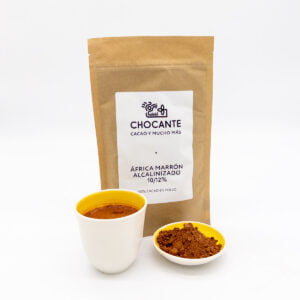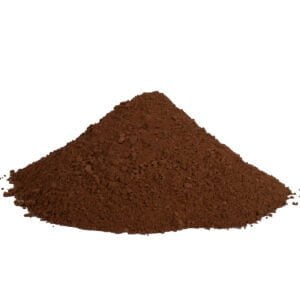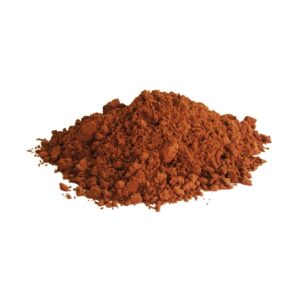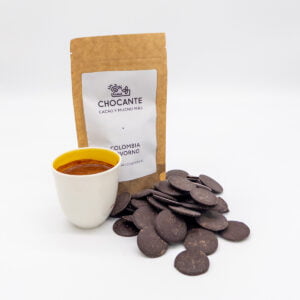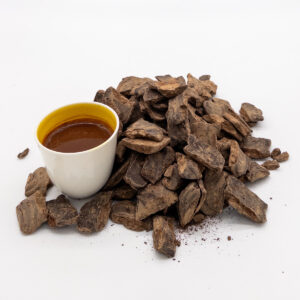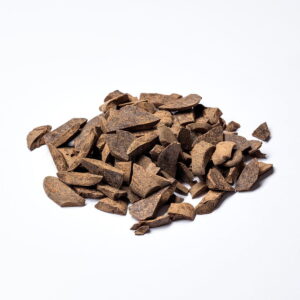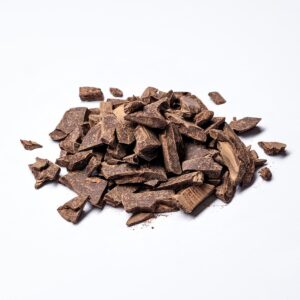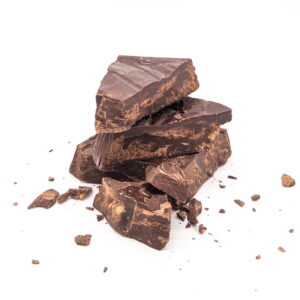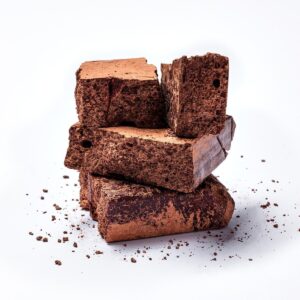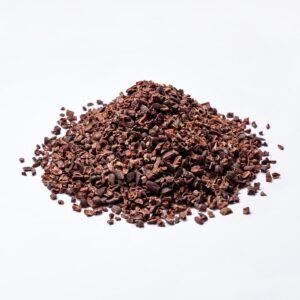Cacao
Our cacao shop offers a wide variety of ceremonial cacao (100% cacao paste), as well as many types of cocoa powder, raw beans, nibs, and cacao butter. The flavour of each of these selected varieties depends on the method of cultivation, drying and fermentation, as well as the characteristics of the soil and the species of the cacao itself – which is why we import cacao from many plantations run in different parts of the world – from the Peruvian Amazon to the exotic island of Java.
1–12 of 17 products
-
 This product has multiple variants. The options may be chosen on the product page
This product has multiple variants. The options may be chosen on the product pageÁfrica Marron Alcalinizado
Alkalised Cocoa Powder 10/12% From 24,50 zł / 250 g -
Sale!
 This product has multiple variants. The options may be chosen on the product page
This product has multiple variants. The options may be chosen on the product pageAfrica Moner Alkalised
Alkalised Cocoa Powder 10/12% From 19,00 zł / 250 g -
BIO
 This product has multiple variants. The options may be chosen on the product page
This product has multiple variants. The options may be chosen on the product pageDominicana Conacado BIO
Ceremonial Cacao From 33,00 zł / 100 g -
 This product has multiple variants. The options may be chosen on the product page
This product has multiple variants. The options may be chosen on the product pageBio Dominicana Banao
Naturalne kakao w proszku 10/12% From 43,00 zł / 250 g -
 This product has multiple variants. The options may be chosen on the product page
This product has multiple variants. The options may be chosen on the product pageColombia Kovorno
Cacao Ceremonial From 75,00 zł / 250 g -
 This product has multiple variants. The options may be chosen on the product page
This product has multiple variants. The options may be chosen on the product pageEcuador Manabí
Ceremonial Cacao - 100% Cacao Paste. From 69,00 zł / 250 g -
 This product has multiple variants. The options may be chosen on the product page
This product has multiple variants. The options may be chosen on the product pageGhana Volta
Cacao Ceremonial From 33,00 zł / 100 g -
Sale!
 This product has multiple variants. The options may be chosen on the product page
This product has multiple variants. The options may be chosen on the product pageVenezuela Río Caribe
Cacao Ceremonial From 35,00 zł / 100 g -
 This product has multiple variants. The options may be chosen on the product page
This product has multiple variants. The options may be chosen on the product pageEcuador Arriba Nacional Victoria
Ceremonial Cocoa From 35,00 zł / 100 g -
 This product has multiple variants. The options may be chosen on the product page
This product has multiple variants. The options may be chosen on the product pageGuatemala Baya Kampura
Ceremonial Cocoa From 35,00 zł / 100 g -
 This product has multiple variants. The options may be chosen on the product page
This product has multiple variants. The options may be chosen on the product pageColombia Tumaco
Cacao nibs 47,00 zł / 250 g -
 This product has multiple variants. The options may be chosen on the product page
This product has multiple variants. The options may be chosen on the product pageEcuador Perla Victoria
Ceremonial Cocoa From 35,00 zł / 100 g
We often associate cacao with the sweetness of chocolate, but the full bouquet of cacao flavour includes various shades of bitterness, fruity and nutty aromas – and can be more, or less dry! And when it comes to applications, cacao is not only used in the culinary world – it is also a great natural cosmetic!
100% paste made from ground cacao beans, i.e. ceremonial cacao
Cacao paste, also known as ceremonial cacao, takes the form of blocks, crumbly pieces, or pellets with the consistency of hard chocolate. In fact, ceremonial cacao is just the truest, 100% chocolate with no artificial additives! Cacao paste is characterised by its natural bitterness, but the different varieties vary in taste – some even appear sweet! Delve into the world of cacao and you will find that the bouquet of all its flavours is a veritable Amazon jungle of sensations!
Full fat cacao – how to use it?
Ceremonial cacao (full-fat cacao paste, cacao liquor) is suitable for making a thick, aromatic drink and making chocolate, but it can also be used as a natural skin mask, as well as for massage! Defatted cacao usually contains about 50% cacao fat.
What is cocoa powder?
As the name suggests, this cacao is in the form of a fine powder, which is produced after grinding what is known as “cacao kejk”. What is this “cacao kejk?”. This polonised term (from “cake”) is used to describe the round cake-shaped moulding that is formed after the original cacao mass has been pressed and skimmed. Because of this latter process, cacao powder contains less fat than cacao paste (i.e. between 10% and 24%).
Uses of cocoa powder
Cocoa powder has many culinary uses: it can be used to make a drink or cake, and when combined with cacao butter it is also suitable for making homemade chocolates. Contrary to popular belief, it is a 100% natural and refined product.
Alkalized and natural cacao
There are two types of cocoa powder: natural, with a light brown-red colour, and alkalized (also called Dutch Cocoa), which turns dark brown or even black. The former is defatted cacao without any additives. Alkalized cacao, on the other hand, is treated with a strong alkali during the production process to obtain a darker colour and a milder taste.
What is cacao butter?
Cacao butter, also known as cacao fat, is both an intermediate product for making chocolate and… a natural cosmetic! The name would indicate that this product has the consistency of a soft spread, but it is worth knowing that at room temperature cacao butter is slightly harder than its regular counterpart. In its natural form, it also has an intense chocolate aroma, but a deodorised, i.e. fragrance-free, version is also available.
Uses of cacao butter
Cacao fat is very stable and, of course, it is also great for all kinds of kitchen applications, especially for making white chocolate and other confectionery products. But did you know that cacao butter is also a real friend to your skin? Whether in the form of a cream or when applied directly, butter brightens the skin, regenerates it, nourishes it, and removes blemishes. If you like to smell of chocolate – use natural butter; and if you prefer a conventional perfume, deodorised butter will be right for you.
Raw cacao beans
The cacao fruit contains large beans (up to 1-3 cm long) which, after being extracted, undergo a process of fermentation for several days and drying. They are then ground to produce cacao paste, which will one day be used to make aromatic chocolate!
Consumption of cacao beans
The raw cacao beans are not suitable for direct consumption but roasting them is enough to make them an excellent snack or – once ground – a semi-finished product for further culinary endeavours!
Nibs of cacao
Nibs, also known as cacao nibs, are hulled and crushed cacao beans. They come in two forms: raw and roasted. The latter is suitable for direct consumption, while raw nibs should be roasted in a dry pan beforehand.
For what are cacao nibs used?
Nibs can be a healthy snack that can successfully replace popcorn and sweets for a film screening. They are also used to make cacao paste and, as a result, to make chocolate. You can also use cacao nibs to flavour a variety of drinks – for example, chocolate beer!
Bio/organic products
We also offer organic products made from cacao beans from certified organic plantations. Organic cacao undergoes testing before being loaded into a container and at the port of destination in Europe.
What is bio-certified?
Bio-certification, also known as organic or ecological certification, is an official document confirming that a product has been produced according to certain organic standards. Products bearing this certificate must meet a series of production, processing and distribution criteria that aim to minimise environmental impact and promote a sustainable economy.
Fair Trade certified cacao
Many of our cacao products are Fair Trade certified. Certified plantations are continuously monitored for working conditions and farmer wages.
What is Fair Trade certification?
Fair Trade certification, also known as Fair Trade certification, is official confirmation that a product comes from a production process that adheres to Fair Trade principles. Products bearing this certificate come from companies that ensure fair working conditions and fair wages for producers.
Fair Trade certification organisations adhere to certain standards, which include minimum prices provided to producers, ensuring safe working conditions, and promoting the sustainability of local communities.
Rainforest-certified cacao
Although cacao originates from the Amazon rainforest, it is nowadays not only grown in the Amazon jungle, but throughout the subtropical zone. Some of the products we offer are certified to certify that the cacao plantations have no negative impact on the environment and that they are grown in an environmentally sustainable way.
What is Rainforest certification?
Rainforest Alliance certification is official confirmation that a product or company meets certain standards for sustainable agriculture, environmental protection, and the wellbeing of local communities.
Products bearing this certification come from farms, plantations or companies that follow guidelines to protect the rainforest, minimise environmental impact, protect biodiversity and improve working and living conditions for local communities.
Wholesale cacao
All the products we offer are also available in wholesale: from the proverbial jute bag of raw beans to containers full of aromatic cacao. This is why our offer is aimed at small shops and cafés as well as large-scale producers of chocolate or other confectionery products.
Wholesale cacao delivery times depend on product availability and order volume. However, we always aim for our goods to reach the customer within a few days or – at the most – a few weeks.
